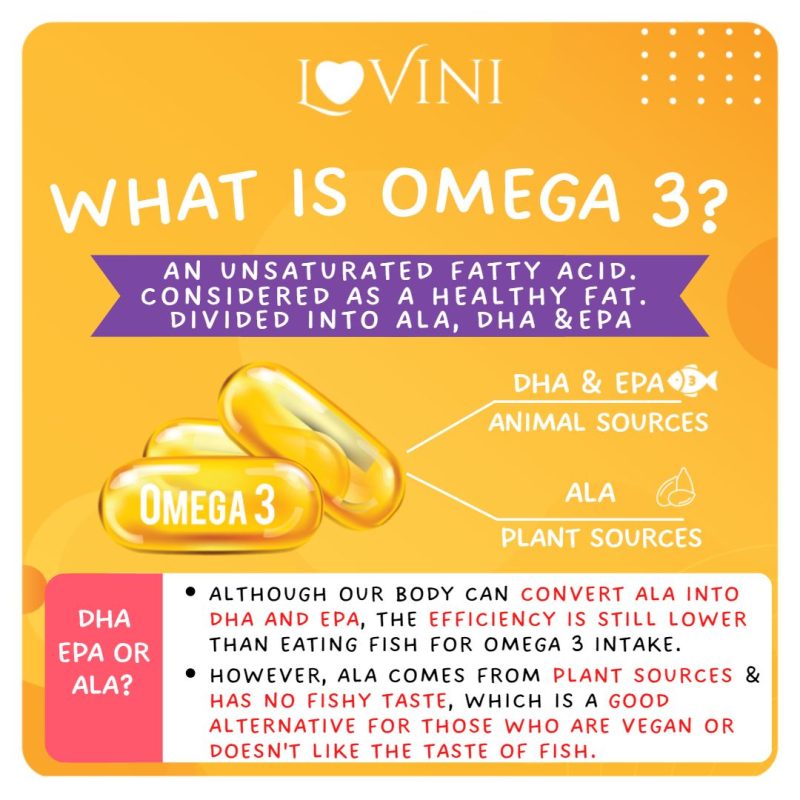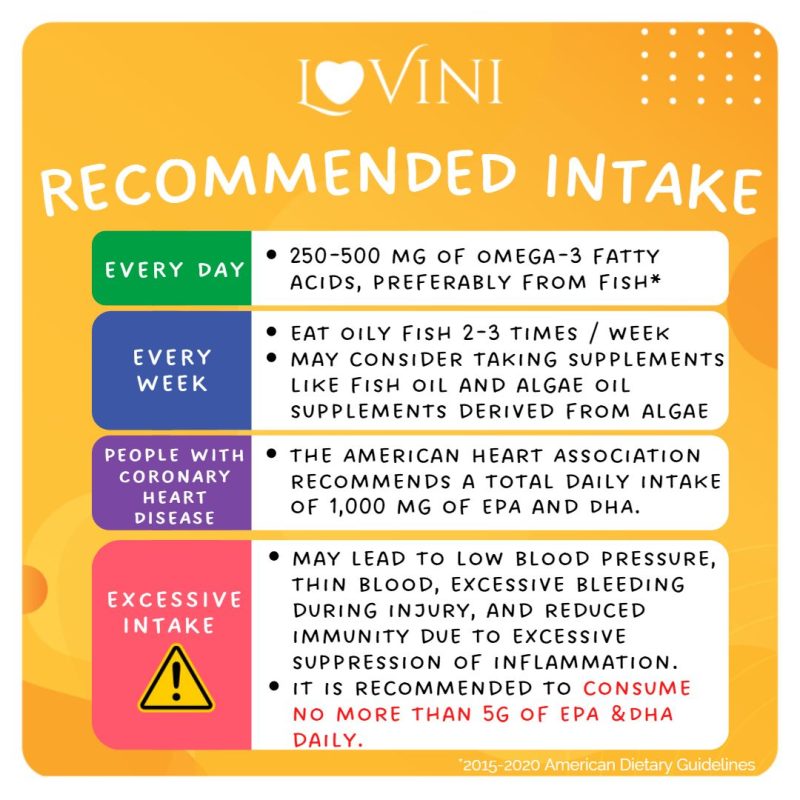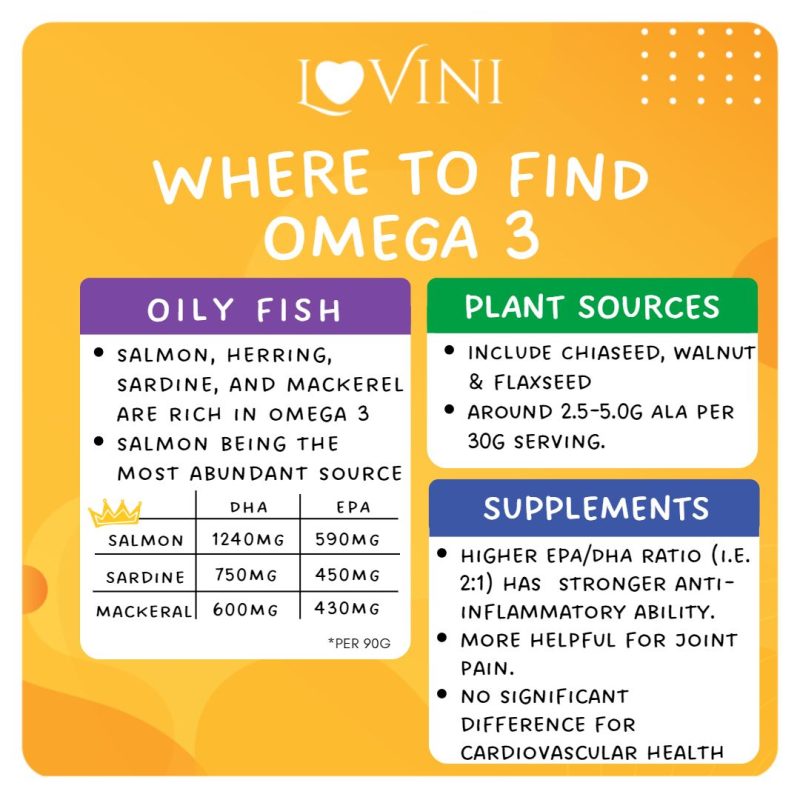What are the health benefits of Omega 3? What’s the difference between DHA, EPA and ALA? How can we get more omega 3 in our daily diet? Continue reading as we’ve got answers to your questions about Omega 3!
What is Omega 3?

Omega 3, an unsaturated fatty acid, is considered as a healthy fat. It can be divided into ALA (vegetable source), DHA and EPA (animal source). Although the human body can convert ingested ALA into DHA and EPA, the efficiency is still lower than eating fish for omega 3 intake. However, ALA comes from plant sources and has no fishy taste, which is a good alternative for vegans and those who doesn’t like the taste of fish.
What are the benefits of Omega 3?

It has different effects and benefits for people of various ages. DHA is one of the key nutrients for eye development, especially in later stage of pregnancy and for newborn. As for adults, studies have shown that Omega 3 is good for cardiovascular health. Omega 3 also has anti-inflammatory properties, which may help relieve joint pain for older people, or slow down brain aging and prevent dementia.
What’s the Recommended Intake?

The 2015-2020 American Dietary Guidelines recommend a daily intake of 250-500 mg of omega-3 fatty acids, preferably from fish, which can be met by consuming oily fish 2-3 times a week. Supplementation with nutritional supplements may also be considered. There are in general fish oil supplements, and also algae oil supplements derived from algae, both rich in omega 3. For people with coronary heart disease, the American Heart Association recommends a total daily intake of 1,000 mg of EPA and DHA.
Be aware that excessive intake of omega-3 fatty acids may lead to low blood pressure, thin blood, excessive bleeding during injury, and may also reduce immune function due to excessive suppression of inflammation. Therefore, it is recommended to consume in total no more than 5g of EPA and DHA daily.
Where to find Omega 3?

Oily fish such as salmon, herring, sardine, and mackerel are rich in DHA and EPA, with salmon being the most abundant source. It contains 1240 mg of DHA and 590 mg of EPA per 90 grams, while equivalent amounts of sardine and mackerel also contain 750 mg and 600 mg of DHA, respectively. Chiaseed, walnut and flaxseed, which are the main plant source of omega 3, contain around 2.5-5.0g ALA per 30g serving.
Lovini’s Recommendation!

LoviniKids Omega3 Gummies
Our allergen-free formulation contains high-quality Omega 3 oils essential for eyes, brain and cognitive function development. With multiple researches showing its positive effects on cognitive and learning ability.
- Essential for eyes, brain and cognitive development
- Supports heart and immune health
References:
- National Institutes of Health. Omega-3 Fatty Acids – Fact Sheet for Health Professionals
- AbuMweis S, Abu Omran D, Al-Shami I, Jew S. The ratio of eicosapentaenoic acid to docosahexaenoic acid as a modulator for the cardio-metabolic effects of omega-3 supplements: A meta-regression of randomized clinical trials. Complement Ther Med. 2021;57:102662. doi:10.1016/j.ctim.2021.102662

